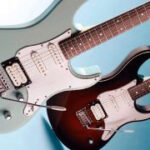Stereo Guitar Amplifiers, while perhaps not the most common setup for guitarists, offer a unique sonic landscape that can significantly enhance your playing experience. But what exactly constitutes a stereo guitar amplifier, and what are some notable examples? Let’s delve into the world of stereo guitar amplification and explore its nuances.
Defining a “true” stereo guitar amplifier can be more nuanced than it initially appears. Is an amplifier with a single input but stereo power amps and speaker outputs considered stereo? The answer often leans towards yes, especially when considering practical applications. Think of it as a system capable of delivering a stereo image, even if the initial input is mono.
Several amplifiers throughout history have ventured into true stereo territory, though they often come with caveats. The Gibson Goldtone GA30RV, for example, features a single preamp section followed by a mono send and stereo returns. This design allows for stereo output and even the possibility of using external preamps for a truly stereo preamp setup if desired. However, these amps, including the Goldtone, are often noted for their considerable weight.
Magnatone amplifiers, particularly models like the original 460 and the M15/M20, are believed to be genuine stereo amplifiers. Similarly, the Groove Tubes STG was designed with a pair of STP-G preamps feeding into a Dual-75 style power amplifier. This configuration represents a more complete stereo signal path. Like the Goldtone, the Groove Tubes STG is also known for its substantial weight, often attributed to its multiple large transformers.
The Lexicon Studio amplifier takes a slightly different approach. It features a mono input and send, but then provides stereo returns. While offering a stereo output stage, its power output is relatively modest at around 5 watts per channel. However, it also includes line outputs, allowing users to integrate it with larger power amplifiers for increased volume. Kendrick also reportedly produced a stereo amplifier within their Black Gold series, characterized as a dual EL84 based amp with approximately 15 watts per channel.
A recurring theme among these true stereo guitar amplifiers is that they tend to be expensive, heavy, and relatively difficult to find. This is largely due to the inherent trade-offs involved in stereo amplifier design. While you might save on one power transformer compared to using two separate mono amplifiers, almost every other component needs to be more robust. This includes a larger cabinet, a more substantial chassis to house the additional circuitry, and often heavier transformers.
Even with classic stereo amplifiers like the Roland JC120, which is widely recognized for its stereo chorus, the stereo implementation is not a purely dual preamp design. The JC120, similar to the Goldtone and Lexicon, features a mono input and send, followed by stereo returns and power amplifiers.
The question then arises: are stereo guitar amplifiers practical for most guitarists? The reality is that many guitarists, even those who own stereo amplifiers alongside traditional mono setups, rarely utilize the stereo capabilities, especially in live performance situations. The added complexity, weight, and cost often outweigh the perceived benefits for many players. For studio recording or specific sonic explorations at home, stereo guitar amplifiers can offer an expansive sound. However, for general use, a pair of well-chosen mono amplifiers might provide a more versatile and practical solution.

